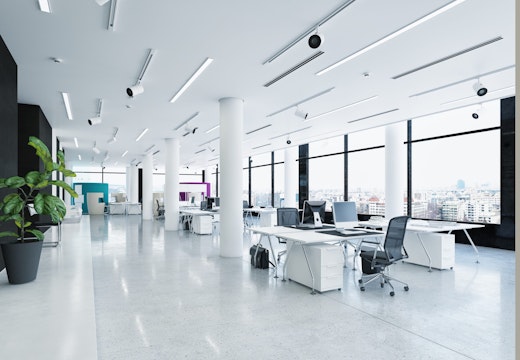Striking a balance: can we dose the right amount of light?
What is the ideal lighting that office workers should be experiencing? A leading lighting scientist explains the optimal light levels to sustain daytime alertness and prepare for the approaching night
Light profoundly influences our biological systems. Its tendency to suppress our natural sleep hormone, melatonin, is long established. That hormonal mechanism is what helps us to sleep well at night and then enjoy better and more productive days, so you really don’t want it disrupted.
When it comes to the bright, morning light that helps us synchronise the body’s clock and puts us into daytime mode, you really can’t have too much. Of course, too much light can be a problem at other times, such as at night.
Intensity isn’t the only factor. My colleagues and I in the scientific community spend many hours discussing issues of spectral power distribution, light direction, and when in the day you need more light and when less, among other things.
Avoiding harm
Years ago, the maxim was do no harm with your lighting. If lighting can affect people’s biology negatively, that should be avoided. Researchers looked to nature for their model: bright days and black nights is the rhythm the human body is adapted to, so let’s avoid bright nights and dim days.
Bright days seemed straightforward, except that energy use then became an issue. So, there was a refinement away from the wholly nature-centric model, with the introduction of the mid-day lighting dip. The thinking was, the morning light successfully prepared everyone for day so, until people start to tire again, lighting levels could be lowered. At one point, the norm was to bring the levels back up at around 2pm, thinking that was needed to avoid a ‘post-lunch dip’ for flagging workers.
But, in time, it was discovered that this wasn’t needed. Synchronisation and alertness depend really on the morning exposure. That exposure has to be just right: very bright and ideally at the same time every day. The industry stabilised on this theory for quite some time, but then refined it further. Even if very bright morning light does no harm, could we get away with less, and save energy?
Natural daylight
Researchers started to measure melatonin suppression at different light levels, trying to zero in on just what was needed biologically. But again, intensity isn’t the only factor. We are adjusted to experience natural daylight, and daylight has its own spectral power distribution. The many LED lights we use each have their own distribution, and they generally trigger the biological responses less than natural daylight of the same intensity.
To compensate, you must use the concept of ‘equivalent daylight value’. The idea is to work out how well each light source gives that biological boost, compared to daylight of the same intensity. Ultimately, the idea is to determine the amount of daylight you seek, then multiply that intensity by a factor representing the spectral difference between daylight and the light source involved, and deliver that amount of light.
Some LEDs are great at helping our visual systems, so we can see to do tasks, for example. A different light might have the most effect on our daily, circadian rhythms. The two are not the same, and it’s important to stay focused on what you want to achieve.
Circadian Stimulus
One approach I like is the one developed by Rea and Figueiro at the Light and Health Research Center, Icahn School of Medicine, Mount Sinai, New York. This led to the term Circadian Stimulus, or CS, which is very functional. With my practical background, I am drawn to tools that are adaptable to practical use in the field.
Rea’s work established that the effect of lighting can be assessed in periods as short as 30 minutes. If the biological system in the eye needs to be exposed to some given, correct ‘dose’ of light over several hours, that could be delivered by very bright light for half an hour, or less intense light over the whole period.
A complicated issue
For these purposes, light is measured in vertical lux – light levels reaching the vertical plane in which a person’s eye is to be found. The height of the standing or sitting person’s eye must also be estimated, plus the direction they are facing, with vertical lux measured at that point. This is different from the calculations normally performed, which are about horizontal lux – light falling on a desktop, for example.
The lighting community now knows how much light we need to feel good and when during the day we need it – 500 lux, vertically on the eye, preferably when we are newly awake, or during the morning. Of course, this is in addition to the calculations required for tasks and light falling on surfaces such as desks, walls and ceilings.
Overall, lighting is a substantially more complicated issue than simply ‘can I see that piece of paper clearly?’, which is why I enjoy sharing these findings.








